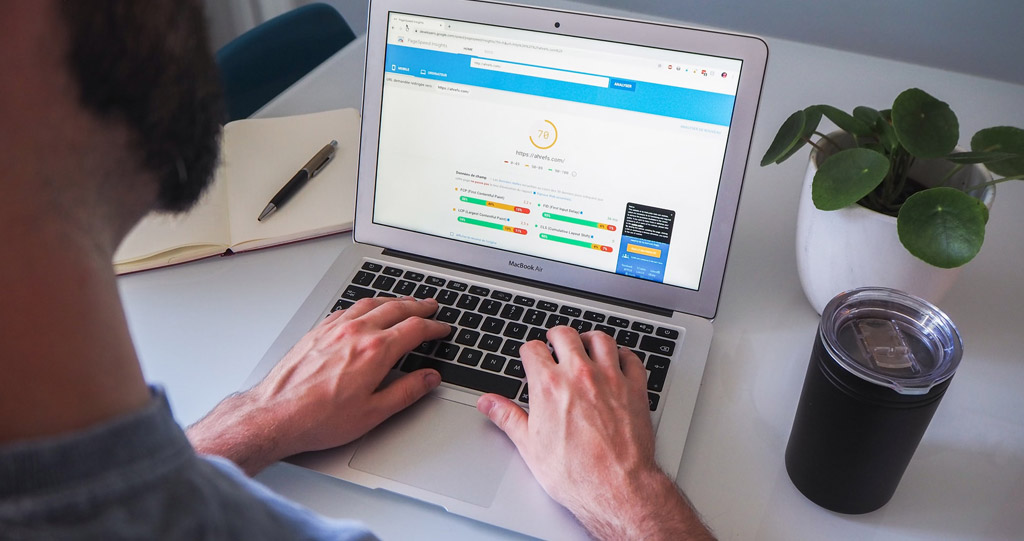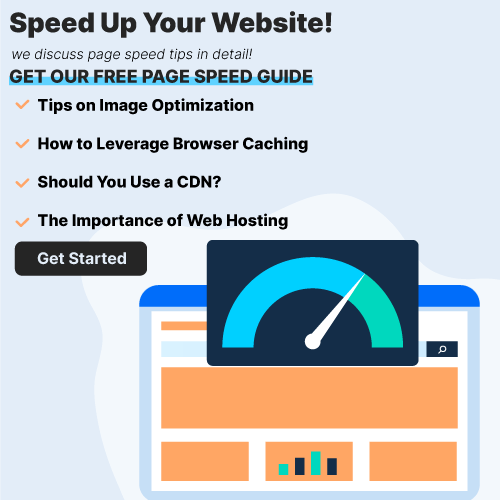Speed is everything in today’s digital world. Users have grown accustomed to things happening immediately and the days of delays are long gone. If your BigCommerce website feels slow, it will frustrate customers and potential customers alike; let us help maintain your BigCommerce website!
In this blog post, we’ll explore several ways that you can speed up a BigCommerce store without breaking the bank or doing too much work yourself.
What is Website Speed?
Website speed is the speed at which your website loads in a browser. It’s measured by the time taken to fully load, which can be affected by a few different factors, such as:
- The size of your pages (too many images or videos will increase page weight)
- Your hosting provider (the closer they are to you geographically, the faster their servers will be)
- The number of ads on your pages and how much revenue they generate (ads can slow down a website by adding more code to load).
The server response time is affected by the number of people on your site and traffic levels. You can analyze high and low traffic periods during a speed test to see how it affects things.
Why is Page Speed Important for My BigCommerce Store?
Speed is important for your website because it affects the number of conversions you’ll make. The faster a page loads, the more people will stay on that page and browse through what you’re selling. But the slower a site load time, the fewer shoppers who are likely to convert.
The same can be said about your Shopify store as well, read more on how to speed up your Shopify website in our post!
How to Measure the Speed of My BigCommerce Store?
There are many free tools to check the speed of your website, such as Pingdom and Google’s PageSpeed Insights. These tools measure load times and display a score for every metric they analyze.
The great news is that most page speed test sites will offer suggestions as to how you can improve the score for BigCommerce site. These are often things like reducing images, using fewer plugins and scripts on pages, or simplifying code in general.
Our Tips for Improving BigCommerce Page Speed
1.) Optimize & compress images
One of the quickest ways to speed up a BigCommerce store is by optimizing images. Our favorite tool for this job is ImageOptim, which compresses image files without any serious loss in quality. Compressing hundreds of small-sized JPEGs can take just a few minutes and will make your website feel much snappier as you navigate through it.
Images should also be made smaller to decrease load time. You don’t need to upload a 3000 x 3000 image if you only need a 100 x 100 product image. These images can take longer to load and display on your page, so make sure they’re the right size before uploading them!

2.) Minify CSS/JavaScript
The next step to speeding up a BigCommerce store is by minimizing CSS and JavaScript. It doesn’t sound like much, but minifying these files can make a huge impact on the loading time of your website by significantly cutting down file sizes. We recommend using tools such as YUICompressor or Clean-css to accomplish this task. You can get help from a BigCommerce web developer who can help with this, especially if it requires changes to your Stencil theme.
3.) Lazy load images
Lazy-loading is another quick and free way to speed up your BigCommerce website. The idea behind lazy loading is simple: only render those elements that are visible in the user’s viewport at any given moment, thereby saving loads of processing power while keeping things speedy.
4.) Analyze with PageSpeed Insights
PageSpeed Insights is Google’s tool for analyzing how well a website loads on all devices and browsers. It offers some great tips that could contribute to speeding up your BigCommerce stores, such as minifying JavaScript and CSS. If you can get a passing Google Core Web Vitals score, your BigCommerce SEO service will provide much better results.

5.) Minimize redirects & broken links
Redirects are necessary when you want to change an address or move content around. However, they’re also notorious for causing delays in loading pages because of the complicated “redirection” process that takes place behind-the-scenes.
6.) Limit the use of apps
While apps are awesome, they can also be a huge headache. If your site is already running slowly, you might want to consider turning off any third-party services like Google Maps or Facebook Comment, as these could slow down performance even further.
7.) Reduce recent blog posts in the sidebar / footer
With some themes, you can display a snippet of recent blog posts in the sidebar or footer. It can be tempting to include as many as possible, but that cuts into your site’s page loading time. The best practice is to only include a few recent posts per category, and then link out to all the other blog content in that section with links.
8.) Use a fast theme
One of the easiest and most effective ways to speed up a BigCommerce store is with fast themes. Themes that use less CSS, JavaScript, or images will load noticeably faster than others because they take up much less space on your server. As such, it’s worth searching for one specifically built for performance, like Atelier Theme.
9.) Utilize Cloudflare for DNS
CloudFlare is a great option for website owners looking to speed up their site. They don’t offer to host themselves, but they do provide one of the best CDN services on the market, as well as free SSL certificates that will protect your customers’ browsing information from anyone who might be spying!
10.) Remove dynamic homepage displays
BigCommerce lets users control the number of Homepage items with featured, new, and top-selling products. This is a great feature, but the more dynamic products you use, the slower your site will be.
There’s no need to get rid of every dynamic display on your website, but limiting the number to less than 5 will leave you in the best position for success.
Final Thoughts on Speeding Up a BigCommerce Store
In conclusion, there are a number of easy-to-implement solutions for speeding up your BigCommerce store. Try making sure all images on the site are optimized, minifying CSS and JavaScript files to decrease file size, lazy loading images where possible, limiting app use when it’s not necessary, and then using PageSpeed Insights to find track changes and find additional ways you to improve performance.
Check out our recent post to learn more of the specifics regarding website maintenance.
